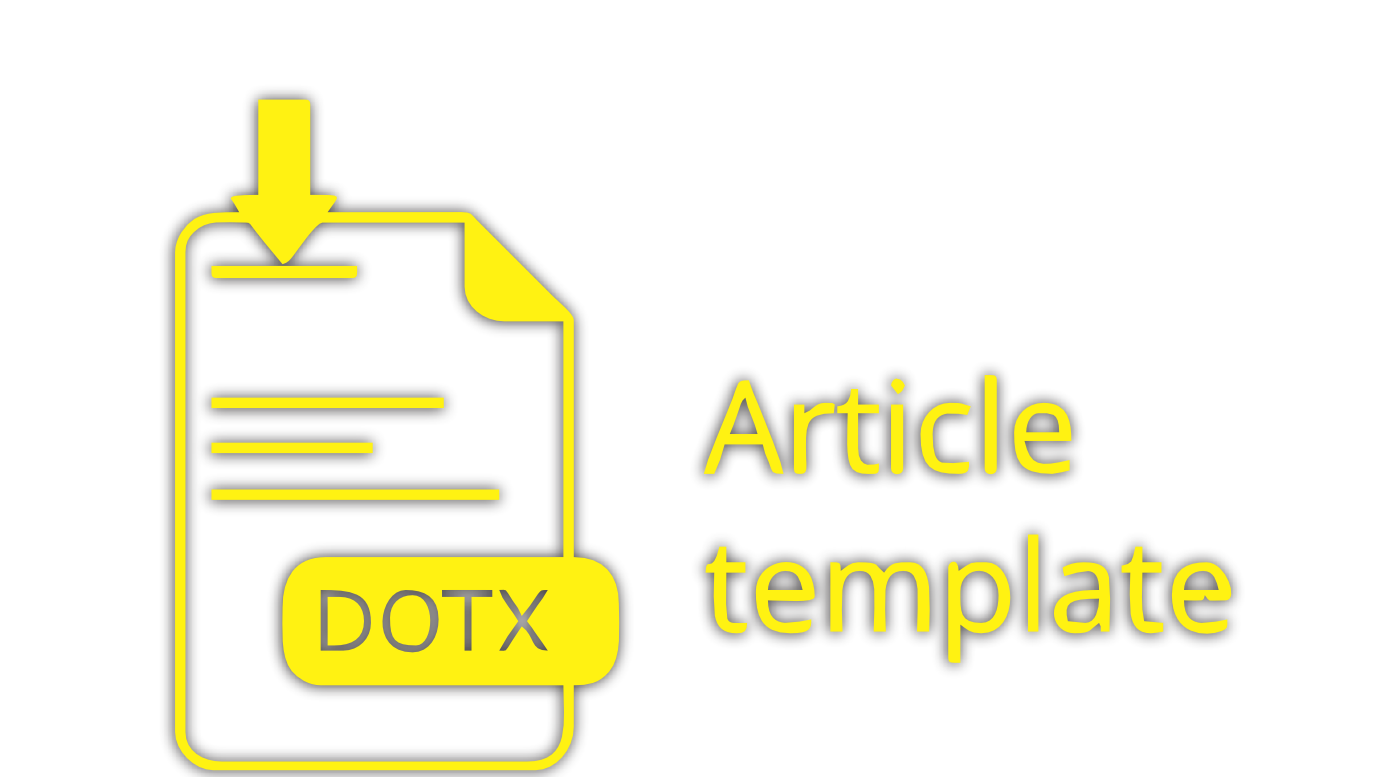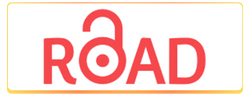Author Guidelines
Language in the manuscript
We currently accept manuscripts in English (Click here to template)
Format
Manuscripts files should be provided in Microsoft Word format. We do not accept other formats, such as LaTex or PDF files. Editable files are required for processing in production.
Length
Articles should be between 7-14 pages, including references.
Title
A title of 20 (twenty) words maximum should be provided.
Author details and authorship
All contributing authors’ names should be added, including their correct email. The names are arranged in the correct order for publication. An email address was signed and provided for the corresponding author. The full name of each author must be present in the exact format they should appear for publication. The affiliation of each author must be stated completely.
The criteria of authorship are as follows; Substantial contributions to the conception or design of the work; or the acquisition, analysis, or interpretation of data for the work; drafting the work or revising it critically for important intellectual content; final approval of the version to be published; Agreement to be accountable for all aspects of the work, ensuring that questions related to the accuracy or integrity of any part of the work are appropriate, investigated, and resolved.
Abstract
Authors must supply a structured abstract in their submission, including purpose, design/methods/approach, findings/results, and conclusion. Abstract consists of 200-300 words, excluding keywords. It has to be available in English. Please avoid the use of abbreviations and do not cite references in the abstract.
Keywords
Authors should provide appropriate and short keywords that encapsulate the principal topics of the paper. The maximum number of keywords is five words, arranged alphabetically.
Manuscript organization
The body of the manuscript should be organized (at least) into the IMRaD structure as follows;
Introduction
It provides adequate background or context (problem and its significance) for the study. The subject should not be covered extensively. It is expected that the rationale or purpose of the study (gap analysis), the objectives in general and specific, and the hypotheses (if any) should be expressed clearly. Present a clear "state of the art" of the subject, which discussed literature and theoretical concepts behind it. A concise general background may be included in the article.
Methods
It provides sufficient details to allow the work to be reproduced by an independent researcher. Methods must be shown clearly and in detail. If quoting directly from a previously published method, use quotation marks, and also cite the source. Any modifications to existing methods should also be described. Indicate the participants observed, including demographic data, number of respondents, the rationale of respondents selection, etc. Describe the experiment's design, such as the experiment procedures, surveys, interviews, observation characteristics, etc. Write the complete research procedure. Be sure that the article's explanations will allow other researchers to reproduce the work or make future work out of it.
Results
The author must write the results in a logical sequence. Results with important findings should be presented first. Results and discussion are written separately and presented sequentially, from the main to supporting data. Each result shown must be mentioned in the methodology. When presenting results in a table or figure, do not repeat all those contents in the text. Present only the summary of the text. Describe only new and important aspects of the study. Do not repeat all information from the results section or any section above—present limitation of the study. Write the issues that are new or unsolved for future research. This section consists of information on what/how the presented data were produced, and no raw data should be present in the article. The produced data are presented in tables or figures with an explanation of the result/findings from the work. The title of the image is written below the picture.
Discussion
The author needs to address connections between findings and basic concepts or hypotheses made earlier. Authors should also express whether any arguments were needed relating to other works by other researchers. Write implications made by the work related to theory or applications.
Conclusions
The conclusion should be linked to the title and objectives of the study. Do not make statements that are not adequately supported by your findings. Write about the improvements made to the industrial engineering field or science in general. Do not make further discussions, repeat the abstract, or only list the results of research. Do not use bulleted points; use paragraphed sentences instead.
Acknowledgment
The author must declare all external research funding sources in their article, and a statement to this effect should appear in the Acknowledgements section. Those who contribute but do not meet all authorship criteria should not be listed as authors, but they should be acknowledged at the end of the text. Only the names of the people, not their roles, should be written under the acknowledgment section.
Figures and tables
All Figures (charts, diagrams, line drawings, web pages/screenshots, and photographic images) should be submitted directly in the manuscript's main body. All Figures should be of high quality, legible, and numbered consecutively with Arabic numerals. Graphics may be supplied in color to facilitate their appearance on the online database.
Tables should be typed and included in the main body of the article. The tables' positions should be inserted in the text as close to the point of reference as possible. Ensure that any superscripts or asterisks are shown next to the relevant items and have corresponding explanations displayed as footnotes to the table, figure, or plate.
References
Each literature that is referred to and found in the article (author, year) must be listed in the references. Inciting an article written by two authors, the two family names must be mentioned, for example, Habazar and Yanti (2017) or (Habazar and Yanti, 2017). If an article is written by three or more authors, only the first author's family name is mentioned, followed by et al. Writing et al. plus a comma if followed directly by the year of publication. If the year is in parentheses, then et al. are not followed by a comma. Writing words et al. not in italic style, for example, Lina et al. (2012) or (Lina et al., 2012)
Quotations that are indicated by the word "cit" or originate from an uncertain source (anonymous) must be avoided. The references for data that has not been published yet and personal communication are not displayed in the references. Still, they must be written directly in the text, for example: (Rifai, 2007; personal communication) or (Setyawan, 2007; unpublished data).
The reference is written alphabetically without numbering. In the references list, the first author's family name is placed in the front, while the next author's name is written with the abbreviated first name. The article's title is not in italic style and written in small letters unless there are certain writing conventions, such as place names. Journal names must be written in full, not in italic style, and must not be abbreviated. The references should be carefully checked for completeness, accuracy, and consistency.
All references should be written down in a reference tool manager, i.e., Mendeley or Zotero, and arranged in alphabetical order. They should be supplied as follows:
Journal:
Chimeno, C., Schmidt, S., Hamid, H., Narakusumo, R. P., Peggie, D., Balke, M., & Cancian de Araujo, B. (2023). DNA barcoding data release for the Phoridae (Insecta, Diptera) of the Halimun-Salak National Park (Java, Indonesia). Biodiversity Data Journal, 11, e104942. https://doi.org/10.3897/BDJ.11.e104942.
Book:
Price, P. W., Denno, R. F., Eubanks, M. D., Finke, D. L., & Kaplan, I. (2011). Insect Ecology: Behavior, Populations and Communities Combining. Cambridge University Press. https://doi.org/10.1017/cbo9780511975387.
Book chapter:
O’Neil RJ dan JJ Obrycki. (2009). Introduction and augmentation of biological control agents. In: Radcliffe EB, WD Hutchinson dan RE Candelado (eds). Integrated pest management: Concepts, tactics, strategies, and case studies. Cambridge University Press. New York.
Proceeding:
Reflinaldon, & Hamid, H. (2023). Insect diversity on wheat as a new cultivation crop in West Sumatera In S. Wiyono, Suwardi, & A. M. Syakir (Eds.), IOP Conference Series: Earth and Environmental Science (Vol. 1133, Issue 1). IOP Publishing Ltd. https://doi.org/10.1088/1755-1315/1133/1/012068
Paper, thesis, dissertation:
Castro, M. V. M. (2022). Soybean Gall Midge (Resseliella maxima Gagné): Insecticide Efficacy and Seasonal Larval Abundance. University of Nebraska.












